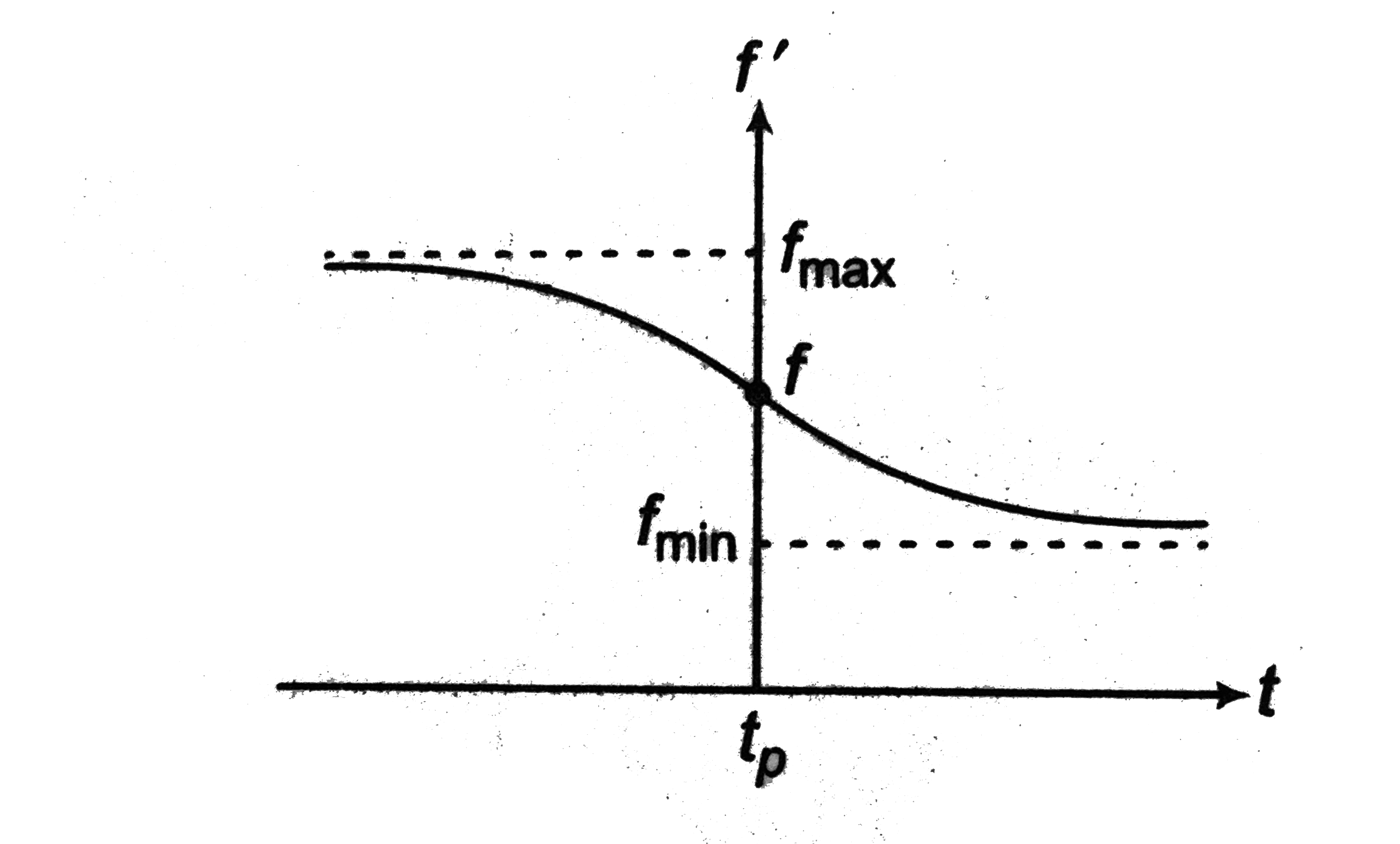If source does not move along the line SO. what will be the apperent frequency at O

The changed frequency f' is now,
f'=f(υυ−υscosθ)
This time f' is not constant but it is a function of θ , which is variable. But , at a far distance,
θ→0∘ or cosθ→1 or
∴f'=f(υυ−υs)
and this is the maximum value of f' (say fmax)
At point P,θ=90∘
∴f'=f
During receding (to the right of p)
f'=f(υυ−υscosθ)
again, at large distance from P,
θ→∘ or cosθ→1
f'=f(υυ+υs)
This time, this is the minimum value of f' (say fmin).
Hence, f' varies from fmax to fmin' with f'=f at the time of crossing p .
The correct f' versus t graph is as shows below.

Topper's Solved these Questions
- SOUND WAVESBook:DC PANDEY ENGLISHChapter:SOUND WAVESExercise:Miscellaneous Examples
Explore 8 Videos
- SOUND WAVESBook:DC PANDEY ENGLISHChapter:SOUND WAVESExercise:Level 1 Assertion And Reason
Explore 10 Videos
- SOUND WAVESBook:DC PANDEY ENGLISHChapter:SOUND WAVESExercise:Example Type 4
Explore 2 Videos
- SOLVD PAPERS 2017 NEET, AIIMS & JIPMERBook:DC PANDEY ENGLISHChapter:SOLVD PAPERS 2017 NEET, AIIMS & JIPMERExercise:Solved paper 2018(JIPMER)
Explore 38 Videos
- SUPERPOSITION OF WAVESBook:DC PANDEY ENGLISHChapter:SUPERPOSITION OF WAVESExercise:Level 2 Subjective
Explore 8 Videos
Similar Questions
A source of sound S is moving with a velocity of 50m/s towards a stationary observer. The observer measures the frequency of the source as 1000 Hz. What will be the apparent frequency of the source as 1000 Hz. What will be the apparent frequency of the source when it is moving away from the observer after crossing him? The velocity of the sound in the medium is 350m/s
View SolutionA source of sound S is moving with a velocity of 50m/s towards a stationary observer. The observer measures the frequency of the source as 1000 Hz. What will be the apparent frequency of the source as 1000 Hz. What will be the apparent frequency of the source when it is moving away from the observer after crossing him? The velocity of the sound in the medium is 350m/s
View Solution
Knowledge Check
At what speed should a source of sound move so that observer finds the apparent frequency equal to half of the original frequency ?
Av2B2vCv/4DvAn observer moves towards a stationary source of sound. The percentage change in the apparent frequency is
AzeroB0.05C0.1D0.2
Assertion : A sound source is approaching towards a stationary observer along the tine joining them. Then , apparent frequency to the observer will go on increasing.
Reason : If there is no relative motion between source and observer , apparent frequency is equal to the actual frequency.
View Solutionif the speed of a sound source is equal to the speed fo sound and the source is moving away from the observer, then the ratio of apparent frequency to the original frequency is
View SolutionThe frequency of sound produced by a bell is 500 Hz the velocity of the source relative to still air is 60 m/s. An observer moves at 30 m/s along the same line as the source. Calculate the frequency of sound wave measured by the observer. Consider all possible cases (speed of sound v=340ms.)
View SolutionThe frequency of sound produced by a bell is 500 Hz the velocity of the source relative to still air is 60 m/s. An observer moves at 30 m/s along the same line as the source. Calculate the frequency of sound wave measured by the observer. Consider all possible cases (speed of sound v=340ms.)
View Solutionsource and observer both start moving simultaneously from origion one along y - axis with speed of source = 2 (speed of observer ). The graph between the apparent frequency observed by observer (f) and time (t) would be
View SolutionA source of sound emitting a note of frequency 200 Hz moves towards an observer with a velocity v equal to the velocity of sound. If the observer also moves away from the source with the same velocity v, the apparent frequency heard by the observer is
View Solution